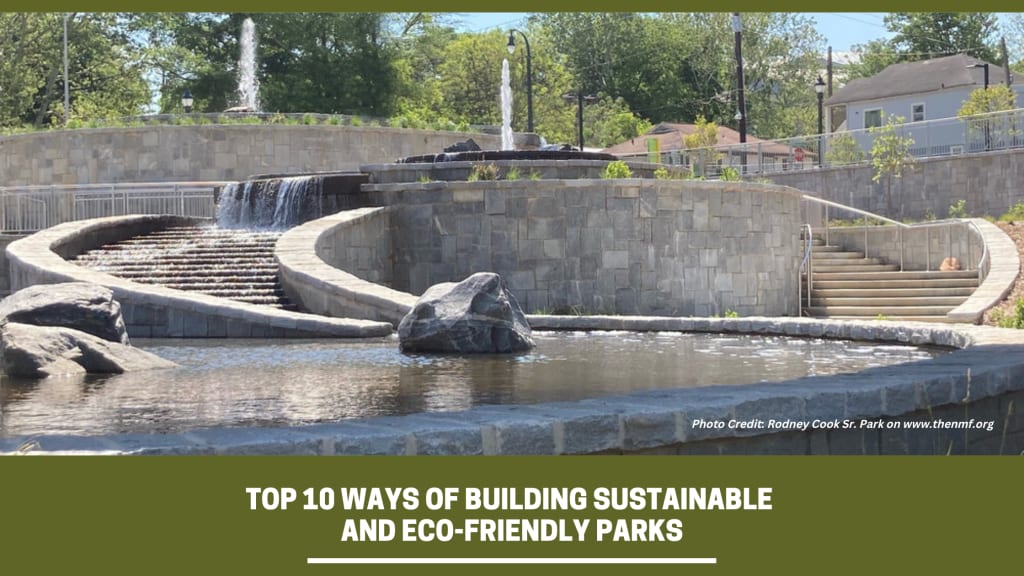Top 10 Ways of Building Sustainable and Eco-Friendly Parks
Continue reading for the top ten suggestions for creating a sustainable park...

Parks are about much more than making a community more visually appealing and liveable. Parks can also help to protect and conserve our natural areas, as well as promote a healthy ecosystem. A park architecture Atlanta that is designed primarily for aesthetics and recreation may not be as sustainable or beneficial. There are ways to design parks that consider those two factors, but the impact on the environment should be a top priority.
You're doing a lot more than just providing a nice place for people to gather when you create an eco-friendly park. You can also help your environment by providing a habitat for native flora and fauna. A park with a lot of native plants provides a habitat for wildlife to live and thrive. To do so, limit the amount of construction and paved areas that go into the park; this will improve groundwater flow and keep the land for the animals. Continue reading for the top ten suggestions for creating a sustainable park.
1. Keep the Use of Turf to a Minimum
Areas with a lot of grass aren't good for wildlife or for preventing soil erosion, so keep grassy areas to a minimum. Large expanses of grass should be restricted to athletic fields and facilities.
2. Encourage Native Plants
You can promote a healthy and local ecosystem by planting a lot of trees, bushes, and plants that are native to the area. It is critical to avoid planting invasive and non-native species, as they will harm the ecosystem and may be difficult to remove in the future.
3. Don’t Build Near Wetlands
It is critical to avoid building or paving projects near wetlands because they can cause irreparable and irreversible damage. Wetlands, according to experts, are very sensitive and delicate ecosystems that are home to a variety of species, so it is critical to design the park in a way that supports and protects wetlands.
4. Limit the Amount of Paved Surfaces
Paved surfaces, as previously mentioned, prevent the flow of water and, because they are non-porous, prevent rainwater from reaching the ground. They also divide the habitat of wildlife into sections. Reduce the number of parking lots, roads, and paved trails to a bare minimum.
5. Pest Management Must Be Integrated
There are alternatives to using harmful pesticides that leach into the environment and harm other species. Use natural traps instead, or introduce sterile males into the environment.
6. Build Sustainably
Any man-made structures, such as park benches, should be built in a sustainable manner, using materials such as metal. This means they will last longer without degrading and harming the environment.
7. Provide Recycling Options
Placing recycling bins next to trash cans allows people to recycle anything made of glass, plastic, or paper. Don't make the bin labels too confusing, or people will become impatient and throw their trash anywhere.
8. Don’t Remove Topsoil
A few park landscape design experts advise city planners and builders to keep the topsoil in place while building the park. By doing so, you ensure that all native plants receive all of the nutrients they require to thrive.
9. Use Mulch and Compost to Fertilize
You want to fertilise the plants and trees you're planting using natural methods. Chemical fertilisers can cause far more environmental harm than good. Natural fertilisers are equally effective, so look for suitable alternatives.
10. Keep Existing Natural Places
You want to preserve natural landscapes as much as possible. It's easier to make a park healthier and more sustainable if you keep disturbances to a minimum and start with a healthy ecosystem. Consider areas where parks already exist and how they can be improved when planning new parks. You should also avoid disturbing fallen trees and mulch unless they pose a threat to public safety. This is because undergrowth is critical to the health of the ecosystem.
About the Creator
Amit Kumar
Full-time thinker & part-time writer...
Enjoyed the story? Support the Creator.
Subscribe for free to receive all their stories in your feed. You could also pledge your support or give them a one-off tip, letting them know you appreciate their work.






Comments
There are no comments for this story
Be the first to respond and start the conversation.